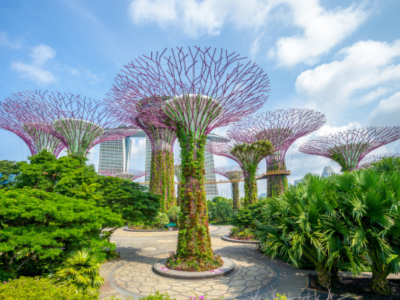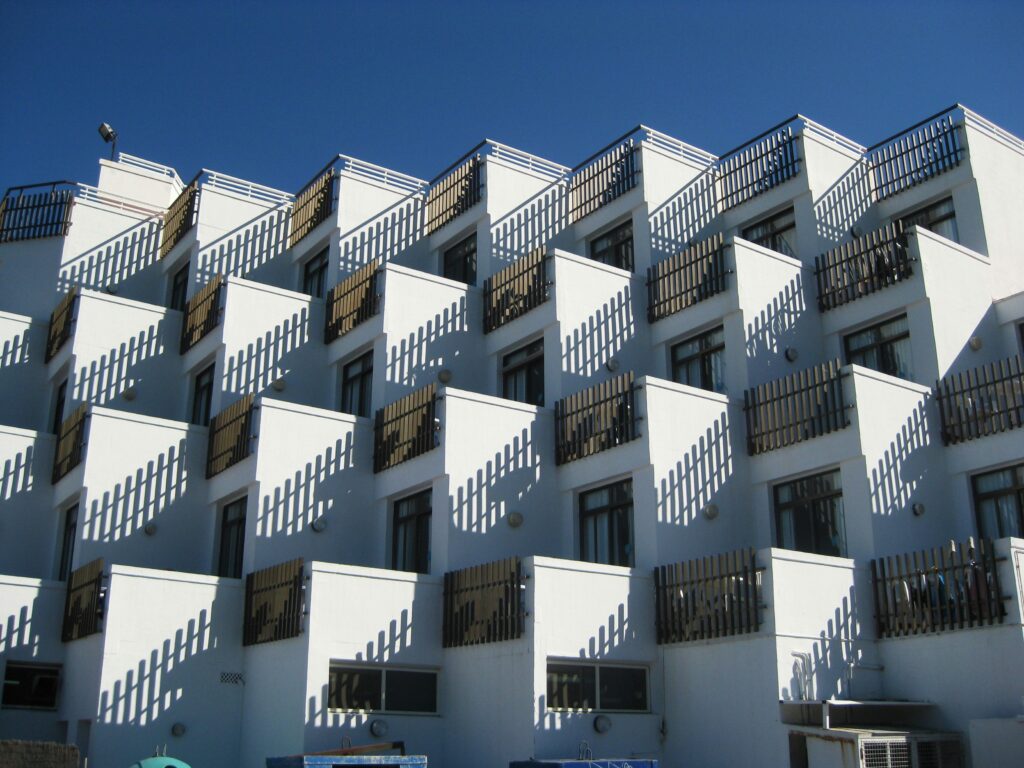The Global Wellness Summit (GWS) unveiled its annual “Future of Wellness 2024 Trends” report, the longest-running, most in-depth forecast of the big trends that will shape wellness in the year ahead. According to the GWS, the wellness market sees a growth from $5.6 trillion today to $8.5 trillion by 2027. But the kind of wellness that matters, and for whom, is undergoing transformations. Here, the top wellness trends for 2024.

Climate-Adaptive Wellness
As the world heats up, a new “climate-adaptive wellness” will focus on cooling versus heating. More than 70,000 people died from excessive heat across Europe last summer, according to research led by the Barcelona Institute for Global Health (ISGlobal). In the US, Phoenix saw a record 31 consecutive days with temperatures over 110, the ocean water in Florida soared above 100, and a heatwave in the Midwest saw schools and food banks close. Cities and spaces are shifting and will develop more green spaces, tree covers and rooftop gardens that work to cool our bodies. Travel will move from traditional beach vacation to “cool-cations” with a new focus on hot/cold therapy’s role in the body’s thermoregulation to the rise of (cooler) “night-time wellness” programming at hotels and resorts. “Climate-adaptive” beauty will also rise with this trend as the changes in weather, increased heat and environmental factors take a toll on our skin. According to GWS, the anti-pollution ingredients market is estimated to be worth $918 million and is expected to reach $2 billion by 2033. Products will aim to protect skincare from extreme weather, heat stress and even smoke from wildfires. The trend of Geoskincare, which includes products that are tailored to specific climate or geographical conditions, factors in things like temperature, humidity and pollution levels.
From Manning Up to Opening Up
Over the last few years, we’ve experienced a major cultural shift in terms of how masculinity and men are viewed. Categories like men’s makeup, gender-neutral dressing and soft boi aesthetic have embraced a softer side to the stereotypical view of masculinity. Now according to GWS, there is a rise of social and emotional wellness offerings catered for men to help them connect with themselves and each other–from dedicated retreats to apps. There’s a shift away from just physical wellness to a “softer” form of wellness that focuses on male connection along with spiritual and emotional wellness—from grassroots support groups, to relational retreats and mental health apps.
The Rise of Postpartum Wellness
Women’s Health continues to be a priority as femtech startups continue to innovate focusing on everything from period care, menopause, sexual wellness and more. In 2024 there’s a rise of postpartum wellness, moving from post-birth only focusing on the baby to a focus on postpartum care, mental health challenges, rest and education for the parents. “Postpartum care in the U.S. is at a “critical juncture, requiring a paradigm shift to ensure the wellbeing of both mothers and infants,” says Sarah de la Torre, MD, an OBGYN and chief medical officer of Mommy Matters. “It is imperative that we prioritize comprehensive, accessible and personalized postpartum support, extending beyond the traditional six-week checkup.” Awareness has increased around the mental health needs of new parents as rates continue to increase on postpartum depression worldwide. Celebrities such as Chrissy Teigen, Brooke Shields and Serena Williams, are destigmatizing the topic by talking about their postpartum mental health struggles. According to GWS, more femtech startups are dedicated to postpartum care across the spectrum—from C-section recovery services to a boom in pelvic floor care products and services which are crucial to postpartum health. The investment flowing into the femtech ecosystem has funded several tech and telehealth startups that are dedicated to increasing postpartum care for parents across the health spectrum. The wellness consumer goods market has also exploded with options, from postpartum skincare to supplements, while brands are also destigmatizing sexual wellness post-birth. In May 2024, MAYA will launch in the UK and focus on every phase of motherhood from pregnancy to the postpartum period. MAYA’s goal is to become a true wellness retail destination, offering “mother-safe” solutions throughout pregnancy and postpartum periods.

The Power of the Pilgrimage
Slow travel and spirituality continue to influence how we travel. According to GWS, one silver lining that came out of the pandemic gloom is that people all around the world rediscovered the simple joys and health benefits that come from walking, along with a purposeful connection with nature. Today, walking enthusiasts are dramatically expanding their horizons by exploring ancient pilgrimage trails, fueling a global trend as record numbers of travelers take up multi-day hikes infused with spiritual exploration and cultural heritage in countries around the world.
Longevity Has Longevity
Influenced by lifestyle shifts like Blue Living and the Aging Well movement, longevity continues to be a hot topic in the world of wellness as we continue to find ways to live healthier and longer lives. Longevity isn’t just about living longer— it’s about living as well as you can for as long as possible. “Increasing lifespan makes absolutely no sense unless you’re simultaneously increasing healthspan,” says Karl Pillimer, PhD, a professor of gerontology in medicine at Weill Cornell Medicine in Ithaca, New York (US). “The goal is not to make people live forever—it’s to limit disease into the very last stage of life, which is what we call ‘compression of morbidity.'” According to GWS, longevity is the new industry pillar, with the longevity clinic the fastest-growing business genre–and the obsession with longevity and healthspan will continue to impact everything–from travel to tech to fitness–in 2024. Healthspan is important and applies to the mind in addition to the body. Experts across the board are noting that more work needs to be done around brain health, which will be a major focus in the future.

A Wellness Check for Weight Loss Drugs
Weight loss has always been a big driver in the wellness market but the last year has seen a complete shift when it comes to weight-loss and weight-loss drugs. The wellness industry was shaken up with the arrival of Big Pharma’s new, extremely effective GLP-1-inhibiting weight-loss drugs, the Ozempics and Mounjaros. According to GWS, the new “magic pricks” quickly ripped open the weight loss Pandora’s box, and their impact on the world and wellness world will only become more intense in 2024. The number of people taking them has skyrocketed, resulting in ongoing global shortages. At least 70 new drugs are in development, with new, cheaper, very effective ones like Zepbound hitting the market this year. GWS predicts that the wellness world will start to investigate how it could actually provide more honest, fully integrative, whole-health weight-loss approaches (spanning everything from nutrition coaching to fitness to mental health services to advanced metabolic health analysis), while also creating specific “wellness companion” programs for the drug-takers. Future considerations include evidence-based methods that could help get people off these “forever” drugs and specifically improve health during treatment.
Sports Finds Its Footing in Hospitality
The fitness space is changing from attending local gyms to more people embracing fitness while traveling. Elite athletes also want hospitality destinations that completely support their wellbeing and training. According to GWS, hospitality destinations are finally answering the “sports” call with everything from pro trainers to pro-level facilities. A niche approach to servicing individual sports now goes way beyond traditional spa and wellness offerings. Pickleball, for example, perfectly blends sports and hospitality. According to the Sports & Fitness Industry Association, in 2022, pickleball players increased 158% from the past three years to nearly 9 million people, and hotels and resorts comprise a fast-growing percentage of over 11,000 venues registered with USA Pickleball. Inclusivity is also an important factor making sure these spaces cater to the likes of female athletes and people with disabilities. There are a variety of needs that a female athlete has that a male athlete may not, most notably, childcare and access to daycare, as well as services for young mothers. Hospitality brands that want to cater to athletes need to ensure that they are accessible.

The Home as High-Tech-Health-Hub
Post-covid our homes have become our wellness sanctuaries and with tech advancements, the home becomes a high-tech-health-hub. According to GWS, people are spending more time at home since before the pandemic. This perma-shift towards remote work and a new world of homebodies is supercharging an ongoing trend: residences are transforming into multifaceted health hubs to meet our evolving needs. Beyond merely serving as static spaces for relaxation and shelter, these locations have become dynamic, providing intuitive and personalized settings for work, social interactions and, more recently, health and wellness practices. There has also been a push to multifunctional homes with functional furnishings and technology blended into home design to create living spaces that actively enhance health and wellbeing. Real estate is even changing as there is a potential for the market to be inundated with self-proclaimed “well-residences.” New York City-based luxury wellness club, THE WELL, is expanding into residential real estate with THE WELL Bay Harbor Islands apartments in Miami, Florida, which feature diffused lighting, water filtration, HEPA air filtration systems, low-VOC paints, organic all-natural scents and energetically charged crystals within the building’s foundation, as well as the option to have your homes “cleansed” by one of THE WELL’s practitioners before moving in—for an equally high-tech and high-spiritual approach to well homes.
A New Multisensory, Immersive Art for Wellness
AI continues to change the world we live in and how we live. A new wave of art installations and concepts, powered by AI and new technologies, are reimagining art as a deeply multisensory, immersive experience expressly designed to transform mental wellbeing. Building upon last year’s Global Wellness Summit trend of Multisensory Integration, 2024 signals an exciting new era at the intersection of art, technology, science and wellness. We continue to see a demand for sensorial experiences as immersive entertainment is growing exponentially in the US by 15-20%, according to research from Bain, and it exists in communities across the US and the world. The AMS Planning & Research team valued it at $470.9 billion. New Experience Art Centers (EACs) are also popping up like Superblue in Miami, Florida, which offers new ways for people to experience and engage with art as wellness. According to GWS, art-as-wellness has changed our understanding of art, pushing the boundaries of sensory immersion and setting new benchmarks for multisensory experiences. As we look ahead, it is essential to approach immersive experiences in a balanced and mindful manner, setting limits on the duration and frequency of engagement and being aware of the potential impacts on both physical and mental wellbeing. Additionally, responsible design and regulation of immersive technologies can help minimize potential dangers and promote safer and healthier engagement. 2024 is not just about seeing art—it’s about transforming it.

Under the Radar
This year, for the first time, GWS Chair and CEO, Susie Ellis, shared possible emerging trends to watch.
- One key theme is for the wellness world to work harder at destigmatizing mental health issues and at creating new solutions, given the skyrocketing global rates of mental unwellness. Simone Biles’ keynote framed this huge issue, chronicling how mental struggles necessitated her withdrawal from the 2020 Olympics, and calling for a world where you could wear a “helmet on your head” to safely signal mental issues just as a cast does for a broken leg. The need for more mental wellness solutions percolated across the Summit.
- Another mega theme: governments embracing more innovative, powerful wellness policies. “Un-GDP” was discussed, with more governments moving beyond money-focused—in favor of quality-of-life—metrics to gauge national wellbeing.
- Through world-leading health/wellness policies, Singapore has dramatically improved its citizens’ health and longevity, which is why it was just named the sixth Blue Zone. This marks a new future of “Blue Zones 2.0,” where communities actively engineer environments that make it “natural” to make healthy choices.
- Keynote speaker Sophie Howe, the first Future Generations Commissioner for Wales, explained the crucial role policy must play in protecting the lives and health of those who will be born 50 years from now. Deborah Birx, MD, introduced the concept of “wellness diplomacy,” which could bring a divisive world together to collaborate on prevention.
The full “Future of Wellness 2024” report can be purchased here.




